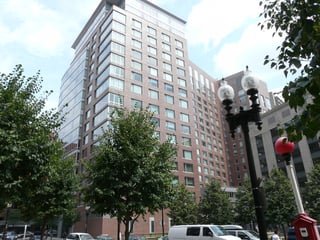It is no secret that construction defect liability claims can become incredibly complicated. When something goes awry after tenants have moved in, the finger pointing game begins. Was it a design flaw or was something installed improperly? Did equipment fail or did the property manager improperly maintain it? Should the construction contractor have realized the engineers made a mistake? When the stakes become large, which insurance company should be on the hook?
 A Luxury Condo Example
A Luxury Condo Example
Residents complained of odors from their neighbor’s units at The One Charles Condominium, a luxury condominium building located on Charles Street in Boston’s Back Bay. The condominium association sued the developer alleging that the heating, ventilation and air conditioning (HVAC) system was improperly built.
The association’s claim asserted that the HVAC system was trying to exhaust much more air than was being supplied (intake) and that the air supplied by rooftop air units was trapped in the common corridors of the building. This created a significant imbalance in the air pressure inside the units. Excessive amounts of outside air was drawn into the units directly through the building envelope and adjacent units. This resulted in odors and high interior humidity.
The association’s law firm, Marcus, Errico, Emmer, Brooks, P.C. (MEEB), retained CCA to help evaluate the problems and render an opinion regarding the cause(s) of the problems. CCA concluded that the designer of the HVAC system was responsible for the odor and high humidity the community had been experiencing. CCA’s engineering analysis together with anecdotal and empirical evidence demonstrated sufficient liability risk for the defendants and sufficient likelihood of a damage award against them to bring them to the settlement table. But the situation was a little more complicated.
It became apparent that the engineering firm responsible for the design was expecting the developer to handle the defense and pay the lion’s share of any damages the association was awarded. However, why would a developer willingly absorb the loss resulting from a settlement, when the association’s evidence suggested that the engineering firm was primarily responsible for the problem?
In fact, everyone involved ― the developer, the engineering firm and the contractors – was assuming that someone else would be on the hook for any loss, so no one was interested in settling.
Breaking the Log Jam
We all know there are no certainties in litigation. In this instance, like many others, the credibility of the expert testimony revealing the design flaw would ultimately become the critical factor in assigning liability. Let’s looks at the various parties’ positions:
- The Condo Association Board. The Board managed owner expectations while assessing the complicated technical, legal, and financial issues involved making informed decisions about how best to protect the association’s interest.
- The Property Management Company. The management company needed to quickly and confidentially work with counsel and forensic experts to assemble information to support the claim.
- Marcus, Errico, Emmer, Brooks, P.C. (MEEB), the Plaintiff’s Counsel. This firm that specializes in advising Condo Associations needed to devise a legal strategy that would drive the most attractive outcome—which entailed hiring CCA to provide irrefutable case facts.
- CCA, the Expert Witness. Martin Barry, PE, CIH and Clark Griffith, AIA provided rock solid analysis and assisted greatly in converting highly technical engineering and architectural issues into a comprehensive and comprehensible narrative.
- The Developer. While certainly the first entity to focus on in the forensic chain, the expert testimony from CCA served the dual purpose of deflecting liability toward their sub-contracted engineering firm.
- The Engineering Subcontractor. According to MEEB, this firm clearly had the most discomfort, which become exacerbated when the trial judge took two definitive actions in the board’s favor:
- The first was the entry of an order barring the “supplemental” expert testimony the engineering firm wanted to submit (because it raised new issues)
- The second was a statement, in open court, that the defendant’s expert disclosures were unacceptably vague and did not comply with the minimum requirements necessary to allow the experts to testify. Those developments left the engineering firm in an even worse defensive position and much more receptive to the settlement MEEB eventually negotiated.
Quality of Forensic Engineering Work and Opinions Lead to Settlement
CCA’s investigation and opinion became the basis for assigning responsibility and liability. While confidentiality provisions prevent disclosure of the settlement details, including who ultimately paid how much, the association’s board was not disappointed in the $12.25 million the association received.



